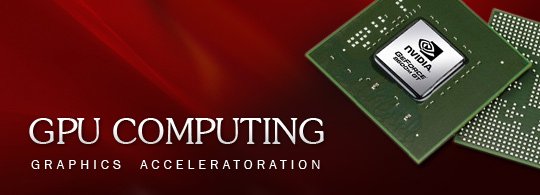As most here will know, GPU is short for graphics processing unit, a piece of hardware that is dedicated to rendering graphics. Years ago, when the personal computer first found its way into homes, dedicated GPUs did not exist. All graphics were displayed and manipulated by the CPU (the central processing unit). As a result, only primitive images could be displayed, without performance issues. It wasn’t until the 1980s that the first dedicated GPU was invented.
Having a dedicated GPU means that all graphics related processing can be offloaded to the graphics card, which can do a much better job at rendering graphics. The more efficient the GPU, the better the graphics display. In the 1990s, with the rise of the Windows operating system, 2D GPUs capable of high resolution rendering took the market by storm. As hardware and software applications continue to evolve, more powerful GPUs are needed to cater to the more demanding needs.
Modern games and software applications often require significant graphics processing power, mainly for 3D rendering and image/video processing. Such applications include 3D games and graphics/video manipulation software like Adobe CS4.
GPUs have now matured to the point that they can be used for processing other than visual. The latest GPUs, including the GeForce 8, 9, and 200-series with a minimum of 256MB of local graphics memory, can accelerate such operations as video decoding, encoding, editing, audio encoding, image manipulation, and content creation. This first came in the form of video decoding. It would take at least eight Intel CPU cores to match the video decoding power of a single GPU using the NVIDIA PureVideo HD or ATI UVD decode engine in many cases. With software designed to utilize the GPU for processing, the GPU is much faster than today’s dual-core and quad-core CPUs for other operations as well. Another example is video encoding and transcoding. An applications such as Badaboom can be accelerated as much as 400% using GPU processing.
Adobe CS4 is a modern image manipulation software used by many professional designers. The software started out as an image editing software, commonly known as Adobe Photoshop. Adobe Photoshop was used by many designers to edit 2D images – mostly photographs. Since then, Adobe has released a suite of image and video editing software. The whole suite of software is known as Adobe CS4. In the complete suite, you find new features that were not possible before the existence of 3D GPU. In fact, with the CS4 release, Adobe has implemented full GPU acceleration to massively improve the performance of almost every operation.
For example, when using Adobe Photoshop CS4, you find that real-time zooming, panning, and rotation of even the largest image appears smooth and instantaneous. In other words, you will not see flickering as you would otherwise experience with a different video card or software application.
The differences are even more remarkable when you are using Adobe Premiere CS4. Adobe Premiere is one of the best video editing software solutions in the market. As special effects in videos such as blur effects or turbulent noise demand a lot more processing power, Adobe Premiere CS4 is able to take better advantage of nVidia’s GPU accelerating capabilities. The user will find it easier to add graphics and video effects to a video, thus speeding up the work flow dramatically.
As you can see, GPU acceleration is becoming well established as a “partner” of the CPU for many intensive tasks. More and more applications will use GPU acceleration in the near future to offer significant performance increases and even power operations that were formerly not approachable with CPU power alone. The popular TMPGEnc 4.0 XPress from Pegasys Inc. is one such application that is highly anticipated to utilize CUDA GPU acceleration.


This indeed has perked my interest, especially if you throw in the SLI and Crossfire into the mix. A multi-CPU (quadcore) and multi-GPU system, if the new Window 7 / software utilize them fully, ‘less’ powerful computers would still be a force to be reckoned with.
That’s true. GPU and quad-core computing is bringing great graphics and gaming experience.
My graphics card cost more than my processor…
With these powerful GPUs, it is always important to make sure your power supply can handle it. Measure the AMPS and not just the WATTS.
Windows 7 should be interesting to look for. Hopefully it brings multi-GPU computing support.